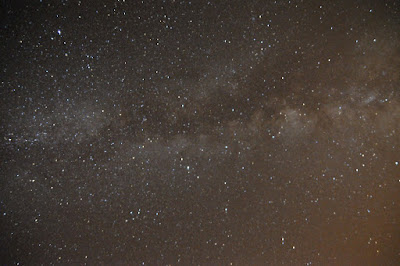At the top its 12,198'' / 3718m above sea level, and is a very conical volcano indeed, looking like a giant nipple from many directions.
The centre of the island is a huge caldera from previous eruptions, and its only a matter of time before it goes again.
One big reason for going there is to go star spotting. Forget the organised tours which are super expensive, just hire a car and drive yourself. The maps are excellent and there are so few roads in the interior that its hard to get lost. The album linked below even has the GPS co-ordinates of the best place to go, which is where the tour takes you anyway. And don't take young kids, they'll get bored and you won't appreciate the expense of their ingratitude.
I didn't take my tripod, so my star and milky way photos were taken with the camera on the roof of the car. To prevent getting star trails, unless thats what you intend, the shutter speed needs to talk account of the focal length / angle of view of the lens. A wider lens means angle subtended per pixel is less, which means you can use a longer speed. A picture such as
had the settings
- ISO: 2500
Exposure: 30.0 sec
Aperture: 2.8
Focal Length: 17mm
Other interesting sights are:
Garachico where the locals have turned solidified lava into swimming pools and features
Los Gigantes which has giant cliffs 1600' / 500m above sea level. Try to go early as it can get crowded, and also the weather clouds over.
If you like sunshine, then avoid the north coast, which due to prevailing winds and topology is very cloudy even in summer. The south-west, by contrast, can start cloudy but often clears by mid mornings.







No comments:
Post a Comment